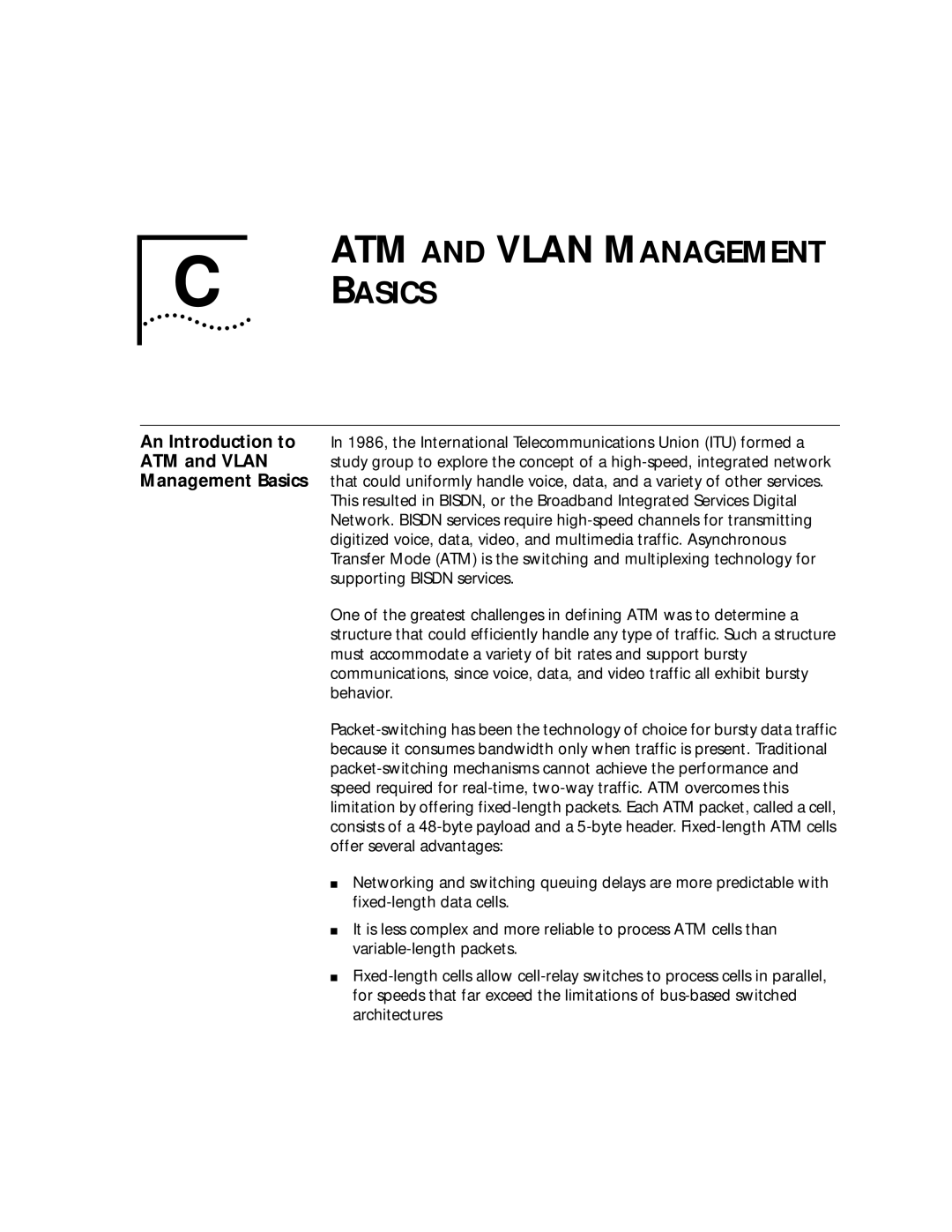ATM AND VLAN MANAGEMENT
C BASICS
An Introduction to In 1986, the International Telecommunications Union (ITU) formed a
ATM and VLAN study group to explore the concept of a high-speed, integrated network Management Basics that could uniformly handle voice, data, and a variety of other services.
This resulted in BISDN, or the Broadband Integrated Services Digital Network. BISDN services require high-speed channels for transmitting digitized voice, data, video, and multimedia traffic. Asynchronous Transfer Mode (ATM) is the switching and multiplexing technology for supporting BISDN services.
One of the greatest challenges in defining ATM was to determine a structure that could efficiently handle any type of traffic. Such a structure must accommodate a variety of bit rates and support bursty communications, since voice, data, and video traffic all exhibit bursty behavior.
Packet-switching has been the technology of choice for bursty data traffic because it consumes bandwidth only when traffic is present. Traditional packet-switching mechanisms cannot achieve the performance and speed required for real-time, two-way traffic. ATM overcomes this limitation by offering fixed-length packets. Each ATM packet, called a cell, consists of a 48-byte payload and a 5-byte header. Fixed-length ATM cells offer several advantages:
■Networking and switching queuing delays are more predictable with fixed-length data cells.
■It is less complex and more reliable to process ATM cells than variable-length packets.
■Fixed-length cells allow cell-relay switches to process cells in parallel, for speeds that far exceed the limitations of bus-based switched architectures

